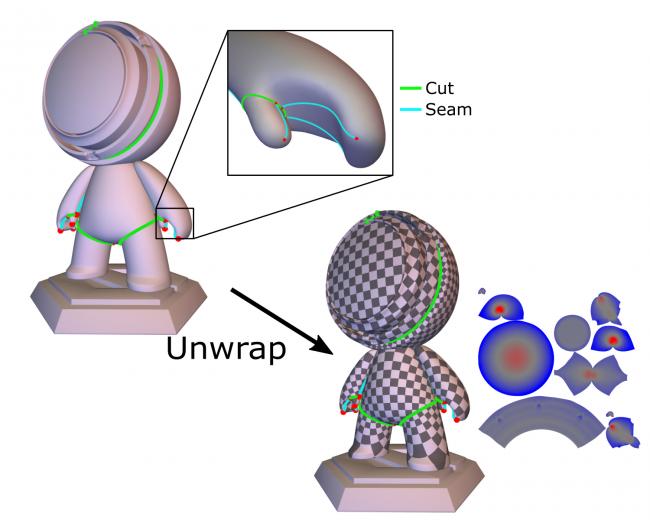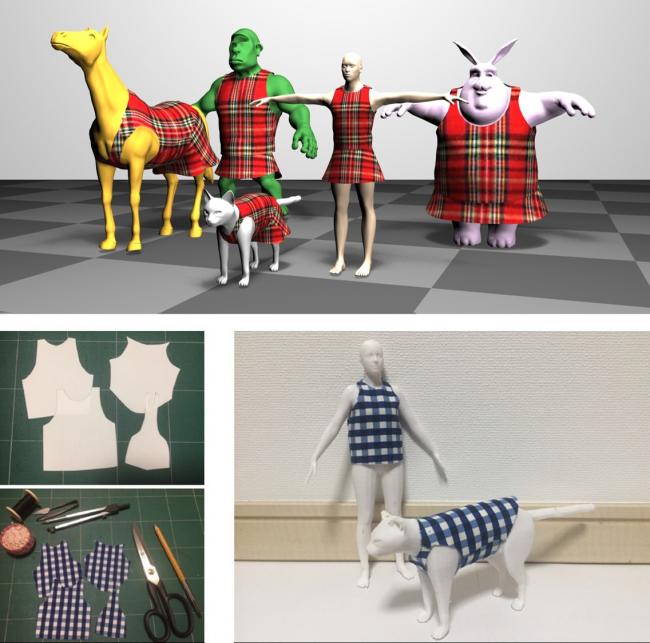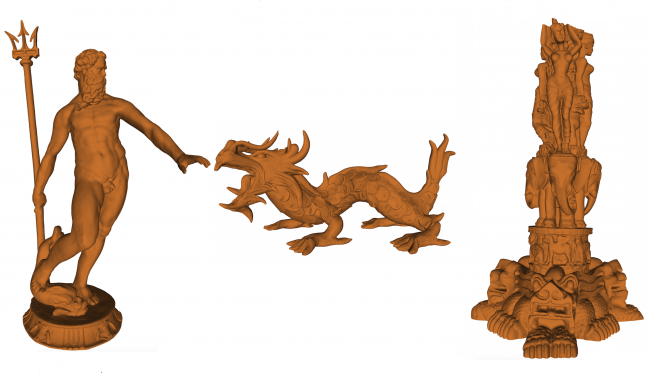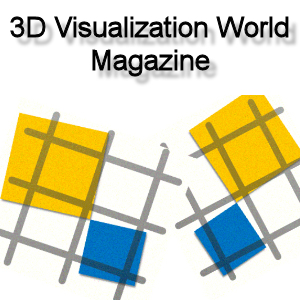 siggraph
siggraph
siggraph
siggraph
Modeling
 Full Conference Pass
Full Conference Pass Full Conference 1-Day Pass
Full Conference 1-Day Pass
Date/Time: 30 November 2017, 09:00am - 10:45am
Venue: Amber 1
Location: Bangkok Int'l Trade & Exhibition Centre (BITEC)
Session Chair: Alec Jacobson, University of Toronto, Canada
Exploring Generative 3D Shapes Using Autoencoder Networks
Summary: We propose a new algorithm for converting unstructured triangle meshes into ones with a consistent topology for machine learning applications. We combine the orthogonal depth map computation and the shrink wrapping approach to efficiently and robustly parameterize the triangle geometry regardless of some imperfections such as inverted faces, holes, and self-intersections. The converted mesh is consistently and compactly parameterized and thus is suitable for machine learning. We use an autoencoder network to extract the manifold of shapes in the same category to explore and synthesize a variety of shapes. Furthermore, we introduce a direct manipulation interface to directly navigate the synthesis. We demonstrate our approach with over one thousand car shapes represented in unstructured triangle meshes.
Author(s): Nobuyuki Umetani, Autodesk
Speaker(s): Nobuyuki Umetani, Autodesk

SeamCut: Interactive Mesh Segmentation for Parametrization
Summary: We propose SeamCut, an analytic and interactive segmentation framework to build an organized set of curves, cuts and seams, prior to surface parameterization. While the cuts are in charge of dividing the mesh in semantic parts, the seams aim at minimizing parameterization distortion. To tailor them, our method analyze the surface geometry using only sparse high level interactions on the surface, where we adopt a field-based approach to generate the curves independently of the actual connectivity of the mesh. Once stable, the curve set may be used to remesh the input or snapped to the mesh edges, giving rise to a consistent mesh segmentation ready for automatic parameterization. We evaluate our system on a variety of models and report interactive performances of our live surface analysis system.
Author(s): Victor Lucquin, Allegorithmic, LTCI / Telecom-ParisTech / Université Paris Saclay
Sébastien Deguy, Allegorithmic
Tamy Boubekeur, LTCI / Telecom-ParisTech / Université Paris Saclay
Speaker(s): Victor Lucquin, LTCI / Telecom Paristech / Paris-Saclay University, Allegorithmic

Quasi-Developable Garment Transfer for Animals
Summary: In this paper, we present an interactive framework to model garments for animals from a template garment model based on correspondences between the source and the target bodies. We address two critical challenges of garment transfer across significantly different body shapes and postures (e.g., for quadruped and human); (1) ambiguity in the correspondences and (2) distortion due to large variation in scale of each body part. Our efficient cross-parameterization algorithm and intuitive user interface allow us to interactively compute correspondences and transfer the overall shape of garments. We also introduce a novel algorithm for local coordinate optimization that minimizes the distortion of transferred garments, which leads to resulting models being quasi-developable and hence ready for fabrication. Finally, we demonstrate the robustness and effectiveness of our approach on a various garments and body shapes, showing that visually pleasant garment models for animals can be generated and fabricated by our system with minimal effort.
Author(s): Fumiya Narita, Waseda University
Shunsuke Saito, University of Southern California
Tsukasa Fukusato, The University of Tokyo
Shigeo Morishima, Waseda Research Institute for Science and Engineering
Speaker(s): Fumiya Narita, Waseda University Shunsuke Saito, University of Southern California

Reconstruction using a Simple Triangle Removal Approach
Summary: A simple method for surface reconstruction has been proposed. The key idea comes from the observation in 2D that the edges in the Delaunay Triangulation (DT) of the point-set can be prioritized and the interior or exterior edges of the DT are removed as long as it has at least one adjacent triangle. Theoretically, it is shown that the reconstruction is homeomorphic to a simple closed curve. Extending this to 3D, an approach based on ‘retaining solitary triangles' and ‘removing triangles anywhere' has been proposed. An additional constraint based on the circumradius of a triangle has been employed.
Author(s): Subhasree Methirumangalath, Indian Institiute of Technology Madras
Shyam Sundar Kannan, Indian Institiute of Technology Madras
Amal Dev Parakkat, Indian Institiute of Technology Madras
Ramanathan Muthuganapathy, Indian Institiute of Technology Madras
Speaker(s): Subhasree Methirumangalath, Indian Institute of Technology Madras


